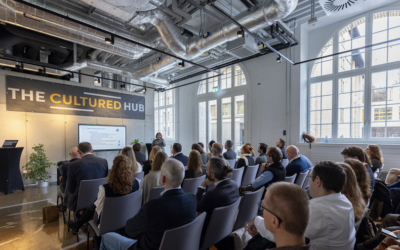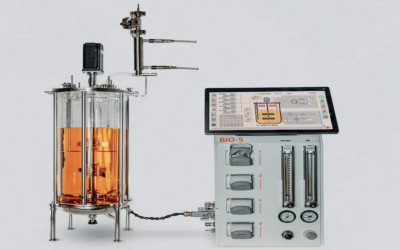Seven things we learnt at our State of Play event on side stream valorisation

The Valley’s State of Play event on side stream valorisation brought Swiss industry leaders, innovators, startups and researchers together in Bern to explore how side streams can be upcycled into valuable and nutritious products – for the benefit of both planet and people.
What?
In case you missed it, side stream valorisation is all about finding new ways to transform by-products from food processing waste streams into new, high-value products.
State of Play attendees were treated to fascinating insights on the topic from our speakers, enjoyed an expert panel discussion and Q&A, and got the chance to explore topics more deeply in smaller discussion groups. There was also plenty of time for networking and sampling some delicious upcycled products in person.
Who?
Linda Grieder-Kern of Rethink Resource, kicked things off with a discussion on the role of side streams in the circular economy – and in Switzerland. Next we heard from Nicolas Dorsaz of Bühler Group about the role of technology and how it is making side stream valorisation appeal to their customers.
We also took a whirlwind tour of the current market from several innovators in the space – from the applications of spent brewers’ grain with William Beiskjayer from UpGrain and Brauerei Locher’s Aurèle Meyer, to the potential of okara, a byproduct of tofu production, via Flavio Hagenbuch of Luya. Fabian Weinländer from Blattmann Schweiz also delved into the opportunities of potato peel and wastewater. A presentation from Tiffany Abitbol, from EPFL’s Institute of Materials, helped to summarise some of the varied technologies for valorising side streams.
In panel discussions, a Q&A session and deep dives, we also heard from Clemens Rüttimann from Food Hub Wädenswil, Doris Erne from Wheycation (upcycled whey products) and Karin Friedli from Circunis (an online food platform for surplus waste).
Thanks to all of the experts and everyone who joined us!
Our top takeaways
💡 Side streams are an untapped resource
- Side streams are the byproducts of food production, distinct from food waste. Upcycling these materials can both reduce emissions and improve food security.
- Food waste is a massive contributor to climate change – and side streams offer a way to reduce waste and create value.
- Spent grains, okara, potato peels and starch slurry are key growth areas and contain nutritional and functional components that can be upcycled into valuable ingredients.
🎤 What the experts said
- Nicholas (Bühler): “The food industry generates 2 billion tonnes of side streams annually, yet many are underutilised or simply discarded”.
- William (UpGrain): “Spent grains alone could provide 24% of the world’s future food needs.”
- Fabian (Blattman Schweiz): “When potatoes are washed and cut for processing, starch leaks into the water, creating a starch-rich slurry. This is often discarded, but it could be converted into food-grade glucose, reducing food waste and improving circularity.”
💡 Technology is a key enabler
- Technological innovations are making side streams more functional, safe, and economically viable for food and non-food applications.
- Fermentation, for example, is unlocking nutritional benefits and improving taste and texture in plant-based proteins and enhancing nutrient bioavailability.
- However, businesses can be hesitant to adopt new processes due to cost, demand, and regulatory hurdles.
🎤 What the experts said
- Flavio (Luya): “Fermentation technology improves the taste and texture of plant-based proteins, making side stream-based products more appealing.”
- Tiffany (EPFL): “Mycelium growth on okara, liquid fermentation, and 3D-printed food applications are emerging solutions. However, many side streams spoil quickly due to high moisture content.”
- Fabian (Blattmann Schweiz): “Existing food infrastructure can process side streams, but we need innovative tech to unlock more value.”
💡Profitability must be built in from the start
- Side stream valorisation startups need a solid business case from day one. Without financial sustainability, projects simply can’t scale. But many focus on sustainability first, rather than profitability.
- Upcycled food startups often struggle with high costs and uncertain demand. It can be difficult to reach profitability due to costly R&D and processing, while many impactful ideas never get off the ground due to lack of capital.
- Partnerships with large food producers can help to reduce costs and improve supply chain integration.
🎤 What the experts said
- Clemens (Food Hub Wädenswil): Startups often begin with small-scale production, but scaling requires major investment. Large food companies have efficient processing systems, but are hesitant to invest in new sidestream projects without clear demand.
- Aurèle (Brauerei Locher): Brauerei Locher’s business model integrates spent grains into commercial food products and partners with other companies and innovators in the industry to keep costs down.
- William (UpGrain): UpGrain works directly with bakeries and pasta makers to integrate spent grain flour into their products, ensuring a steady revenue stream.
💡 Health trumps sustainability
- While sustainability is rising up the priority list, consumers still prioritise taste, price, and health benefits over environmental claims.
- Sustainability is more effective in B2B markets where buyers (large food manufacturers, retailers) care about sustainability because they must meet corporate ESG goals.
- If an upcycled product doesn’t taste good or isn’t priced competitively, consumers won’t buy it – no matter how sustainable it is.
🎤 What the experts said
- Flavio (Luya): “This shift is especially evident in plant-based and alternative protein markets, where early sustainability-focused messaging is now being replaced with nutrition- and taste-driven marketing.”
- Fabian (Blattmann Schweiz): “B2C consumers (everyday shoppers) prioritise taste, price, and convenience over sustainability whereas B2B customers need to meet sustainability reporting requirements.”
- Christina (SFNV): “Some major food companies are removing sustainability claims from their marketing due to greenwashing concerns, instead repositioning upcycled ingredients as functional and superior alternatives.”
💡 Fibre could be the next big thing
- Several food production side streams are naturally rich in fibre: think spent grains left over from brewing beer, the leftovers of tofu production (okara), wheat bran from the milling industry and potato peels.
- Nutritionists predict fibre will become a top consumer priority in the next 5-10 years.
- High-fibre content affects texture, water absorption, and extrusion processes (e.g. making pasta with spent grain). These are key challenges when upcycling side streams into new products.
🎤 What the experts said
- William (UpGrain): “Many European consumers don’t get enough fibre in their diet, creating a market opportunity for fibre-rich upcycled foods.”
- Linda (Rethink Resource): “Demand for products high in fibre is increasing due to growing awareness of the gut health benefits.”
- Fabian (Blattmann Schweiz): “Potato peels and starch slurry are high in resistant starch, a fibre that supports gut health and could appeal to health-conscious consumers.”
💡 It’s not just for food
- Side stream valorisation isn’t limited to food applications.
- Upcycled ingredients can also be used in other industries like pet food, packaging, cosmetics and bioplastics.
🎤 What the experts said
- Tiffany (EPFL): “Okara-based biodegradable films could be a replacement for plastic packaging.”
- Clemens (Food Hub Wädenswil): “Side streams can be used in animal feed and even construction materials.”
- Fabian (Blattmann Schweiz): “Potato starch from wastewater can be turned into glucose or bio-based plastics.”
💡 Greater transparency = new partnerships
- Many food producers generate large amounts of side streams, but hesitate to disclose side stream availability, making it difficult for startups to source raw materials.
- A shared database or industry-wide initiative where companies could confidentially report side stream volumes to match them with upcycling startups could be a potential solution.
- Collaboration between Bühler and startups to develop new protein ingredients from side streams is already underway.
🎤 What the experts said
- Linda (Rethink Resource): “Data on side stream nutritional composition is available but not widely shared.”
- Fabian (Blattmann Schweiz): “More transparency in side stream supply chains would help connect producers with upcycling innovators.”
- During the panel discussion, our speakers highlighted how companies are often reluctant to disclose how much they waste due to PR concerns.
Switzerland: a side stream leader
The session concluded with a Q&A session which covered consumer perception, technological challenges, funding gaps, and collaboration in sidestream upcycling. And one theme emerged again and again: Switzerland as a side stream leader.
This was a major theme throughout the event, emphasized by multiple speakers and in the panel discussion. Switzerland already has strong research institutions, food tech startups, and sustainable agriculture. And here at the Valley, we are working on developing a national ecosystem for upcycling. With improved coordination, Switzerland could become a global hub for side stream innovation.
Huge thanks to Bern Economic Development Agency for supporting this event!
Hungry for more?
Our next State of Play event on Regenerative Farming will take place on the 4th June – and remember each Valley partner can benefit from two complimentary tickets.
Latest News
The Cultured Hub unveils plant cell culturing for cocoa, coffee, and other ingredients
Valley partner, The Cultured Hub, has...
Pow.Bio and Bühler join forces to advance next-generation precision fermentation
Pow.Bio, the pioneer in AI-enabled...
The perfect mix of talent and tech: empowering startups in the Swiss food ecosystem
Innovation succeeds when the right...
Tetra Pak acquires Bioreactors.net to accelerate solutions for New Food
Tetra Pak Processing Equipment...



